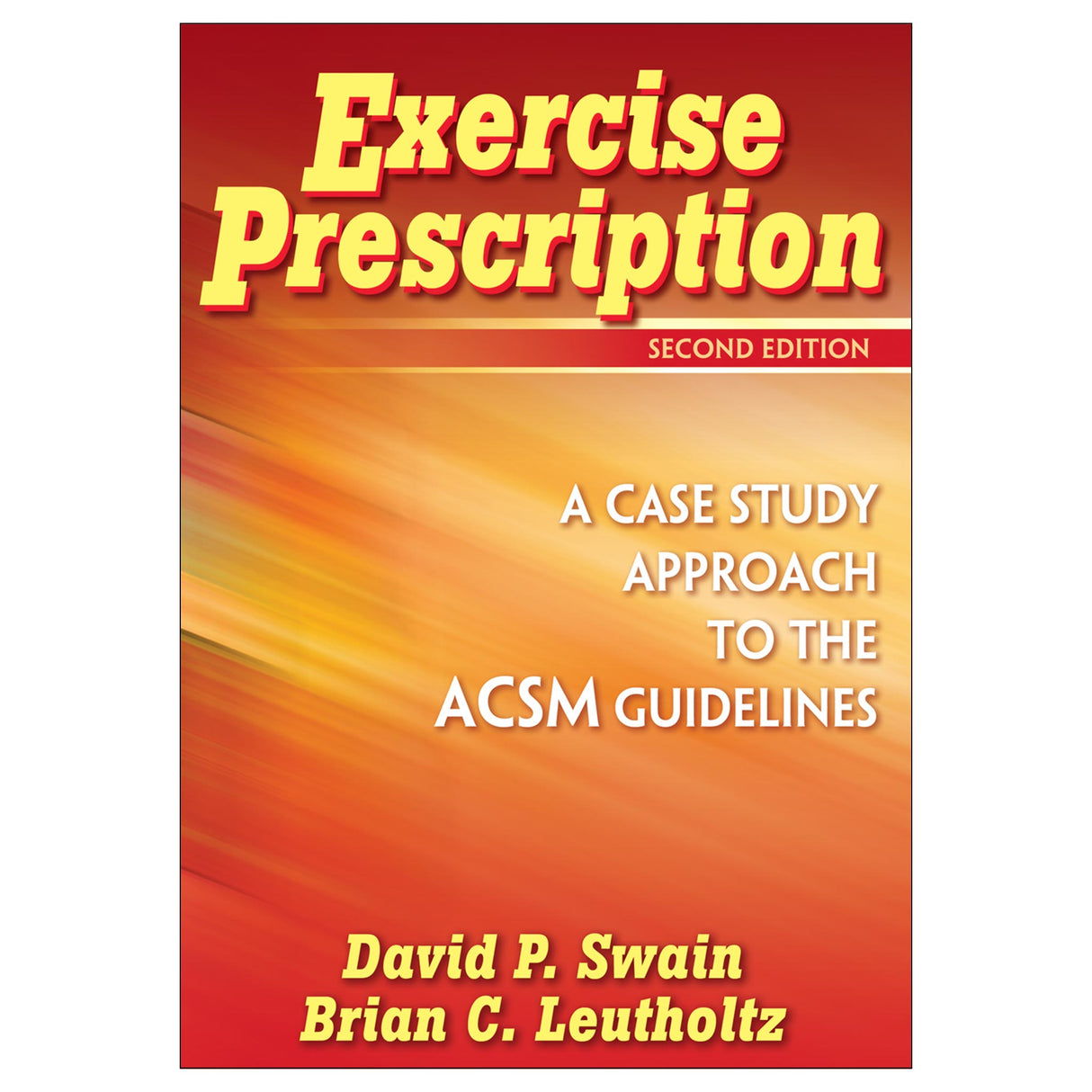Exercise Prescription-2nd Edition
A Case Study Approach to the ACSM Guidelines
Author: David P. Swain, Brian C. Leutholtz
$29.00 CAD
You will find no better preparation source for the American College of Sports Medicine (ACSM) certification than the new, second edition of Exercise Prescription: A Case Study Approach to the ACSM Guidelines. Authors David Swain and Brian Leutholtz present a series of case studies to help you translate the ACSM guidelines for exercise prescription into practical knowledge.
This second edition of Exercise Prescription utilizes the most up-to-date information published in the seventh edition of the ACSM's Guidelines to provide an excellent study resource not only for those preparing for ACSM certification, but for any certification that follows the guidelines set by the ACSM. And unlike the numerous texts that concentrate on the theory and fundamentals of exercise prescription guidelines, this text presents real-life case studies that clearly show readers how the information is applied. You will find new criteria for screening, risk factor thresholds, and fitness norms, as well as revised recommendations for exercise intensity. The text also contains expanded readings on special populations such as pregnant women, children, and various types of cardiac patients.
From beginning to end, this book is organized to help you build your exercise prescription acumen and confidence. The book begins with a section on fitness assessment and determining clients' risk stratification. Next is a discussion of the basic principles of exercise prescription, including V\od\O2 reserve, followed by information on how to use the ACSM metabolic equations. Finally, you will put those equations to work in chapters featuring case studies that present exercise prescriptions for cardiorespiratory fitness, weight loss, muscular strength and flexibility, and special client populations such as children, older adults, and clients with heart disease, diabetes, or hypertension.
Exercise Prescription: A Case Study Approach to the ACSM Guidelines, Second Edition, is formatted for easy reading and includes an appendix of 10 additional case studies—complete with 100 questions and answers—to help you assess your newly gained knowledge. The hands-on, practical approach of this text makes it an ideal resource as you prepare for ACSM certification and enhance your ability to prescribe appropriate exercise for a variety of clients.
Audience
Audiences: A reference for professionals and those interested in ACSM certification, especially at the health/fitness instructor level. Also a supplemental text for students in exercise science programs.
Preface
Acknowledgments
Chapter 1. Case Studies and Risk Stratification
Screening and Risk Stratification
Assessing the Components of Fitness
Goal Setting
Exercise Prescription
Chapter 2. Basic Principles of Exercise Prescription, Now With V\od\O2 Reserve
Principles of Training
ACSM Guidelines
V\od\O2 Reserve
Chapter 3. Exercise Prescription for Cardiorespiratory Fitness
Type (Mode)
Frequency and Time (Duration)
Intensity
Exercise Prescription by Heart Rate
Exercise Prescription by Perceived Exertion
Exercise Prescription by Workload
Chapter 4. Using the ACSM Metabolic Equations
Functions of the Metabolic Equations
Conversion of Units
Walking
Running
Leg Cycling
Arm Cycling
Stepping
Chapter 5. Exercise Prescription for Weight Loss
Energy Balance
Weight Management
Exercise Prescription for Fat Loss
Chapter 6. Exercise Prescription for Muscular Strength and Flexibility
Flexibility
Muscular Strength
Chapter 7. Exercise Prescription for the Older Adult
Cardiovascular Fitness
Resistance Training
Chapter 8. Exercise Prescription for Heart Disease
Exercise for Heart Disease
Four Variables of the FITT Principle
Myocardial Infarction
Congestive Heart Failure
Pacemakers
Cardiac Transplant
Chapter 9. Exercise Prescription for Diabetes Mellitus
Exercise Prescription for Clients With Type 1 Diabetes
Exercise Prescription for Clients With Type 2 Diabetes
Chapter 10. Exercise Prescription for Other Special Cases
Peripheral Arterial Disease
Chronic Obstructive Pulmonary Disease
Hypertension
Pregnancy
Children
Appendix
Additional Case Studies With Multiple Choice Questions
Index
About the Authors





